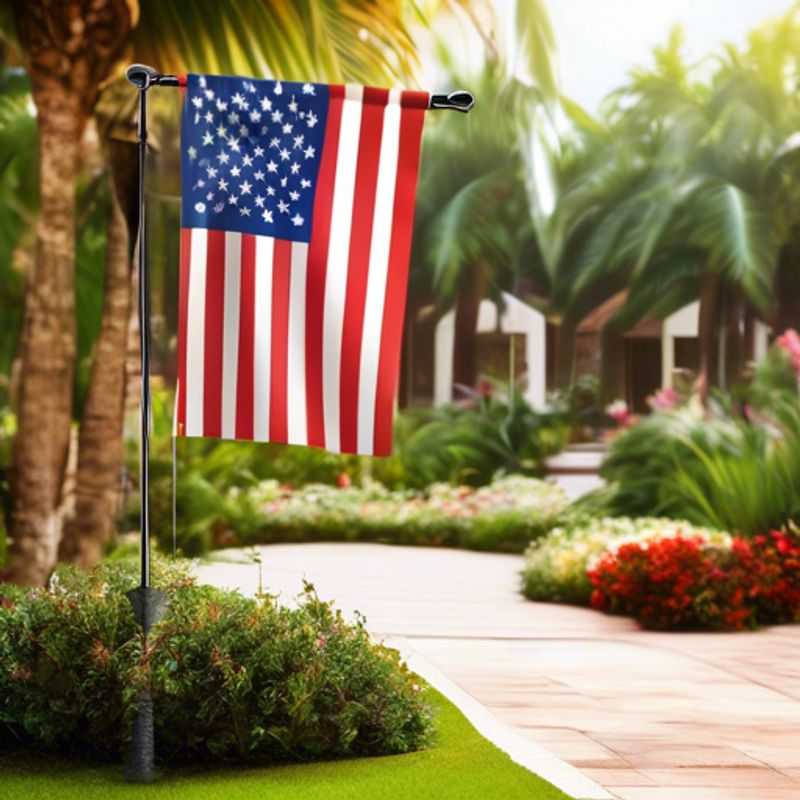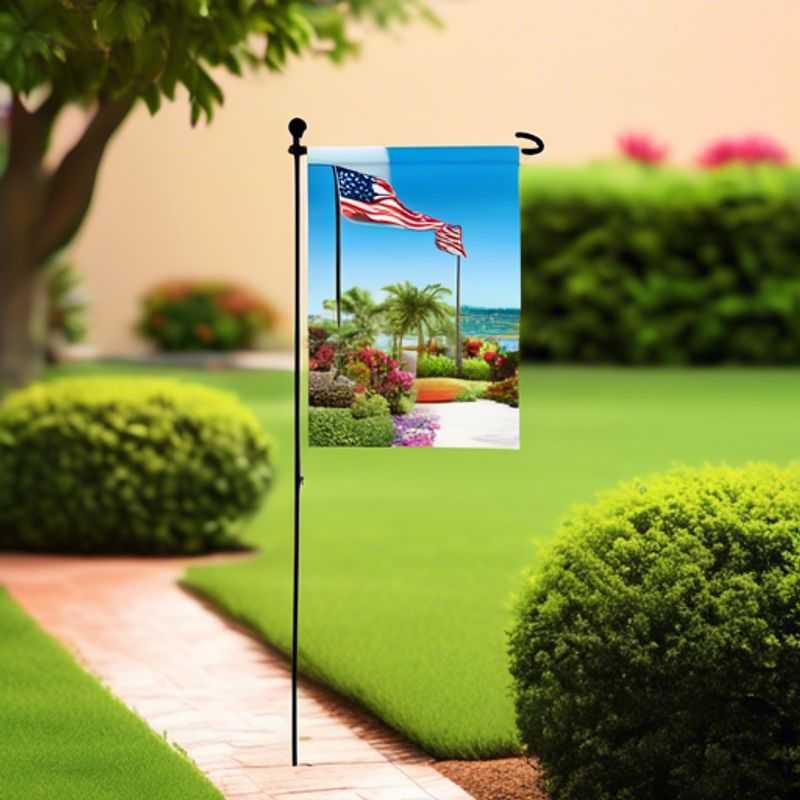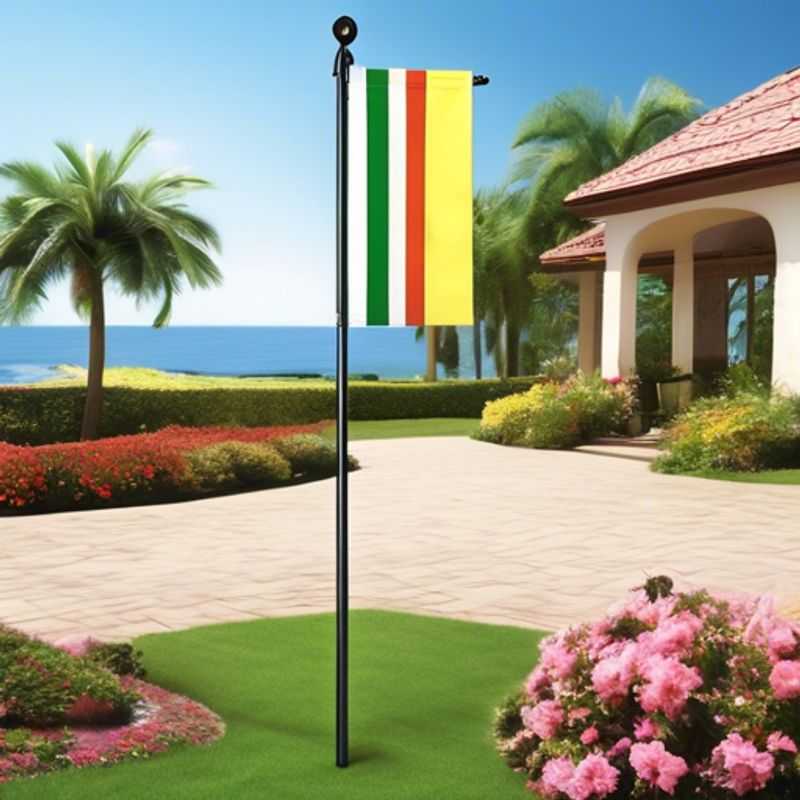7 Essential Tips Before You Buy a Garden Flag Pole

7 Tips to Know Before Buying a Garden Flag Pole: A Practical Guide
Investing in a garden flag pole is a great way to add a touch of personality to your outdoor space. But before you head to the store, there are a few key things to consider to ensure you get the right pole for your needs. Here are seven tips to help you choose the perfect garden flag pole:
1. Measure the area where the garden flag pole will be placed to ensure it fits. Consider the dimensions of your garden bed, flower pot, or other location where you plan to install the pole. Measure the width and depth to make sure the pole will fit comfortably and securely.
2. Consider the material of the pole, such as metal or plastic, for durability. Metal poles are generally stronger and more resistant to weather elements, while plastic poles are more lightweight and affordable. Choose a material that suits your needs and preferences.
3. Look for poles with adjustable heights to accommodate different flag sizes. Adjustable poles provide flexibility and allow you to display flags of various sizes without having to purchase multiple poles. This can be a great option if you plan to change your flags frequently.
4. Ensure the pole has a sturdy base or ground stake for stability. A solid base is crucial for keeping the pole upright and preventing it from falling over in windy conditions. Look for poles with heavy-duty bases or ground stakes that provide secure anchoring.
5. Check the weight capacity of the pole to support your desired flag.

Measure Twice, Plant Once: Ensuring Your Garden Flag Pole Fits Perfectly
Before you plant your garden flag pole, it's crucial to measure the area to ensure a proper fit. This prevents damage to your landscaping and ensures a visually pleasing display. Here's a quick guide:
1. Determine the Pole's Size: Measure the height and width of the garden flag pole, including the base. Consider the flag's dimensions, as it will add to the overall footprint.
2. Mark the Spot: Select the desired location for your flag pole. Use stakes or spray paint to mark the area, taking into account any existing plants, walkways, or structures. Ensure the chosen location is stable and won't obstruct views or create safety hazards.
3. Account for the Base: The garden flag pole base will likely have a certain width. Add this dimension to the pole's overall width measurement when marking your spot.
4. Visualize the Fit: Stand in the marked area and visually assess the pole's height and width. Imagine the flag's size and ensure it doesn't obstruct views or create an eyesore.
5. Adjust as Needed: If the measurements indicate a tight fit or an unsuitable location, adjust your chosen spot accordingly. Remember, a well-placed garden flag pole enhances your landscape and enhances your home's curb appeal.

Choosing the Right Pole Material: Metal vs. Plastic for Durability
When choosing a pole, the material is crucial for its durability and longevity. Metal poles are known for their strength and resistance to harsh conditions. They are often used in construction, industrial settings, and outdoor applications. Aluminum poles are lightweight and corrosion-resistant, making them suitable for portable structures, signs, and fencing. Steel poles offer high strength and durability but are heavier than aluminum.
On the other hand, plastic poles are lightweight and affordable. They are commonly used for recreational purposes, such as tent poles and flag poles. However, they are less durable than metal poles and may be susceptible to damage from UV rays and extreme temperatures.
The choice of material depends on the specific application and the expected conditions. For high-stress applications, metal poles are generally preferred. For lightweight and portable structures, plastic poles can be a suitable option.
When considering the cost, metal poles can be more expensive than plastic poles. However, their durability and longevity can offset the initial investment in the long run.
Remember, selecting the appropriate pole material is crucial for ensuring its functionality, longevity, and overall value.

Choosing the Right Flagpole: Adjustable Heights for Versatile Displays
When selecting a flagpole, consider choosing one with adjustable height to accommodate various flag sizes. This offers flexibility and ensures your flag is displayed properly, regardless of its dimensions. Adjustable flagpoles typically feature a telescopic design, allowing you to extend or retract the pole to match the flag's height. Look for poles with clear height adjustment instructions and mechanisms that are sturdy and reliable.
Adjustable flagpoles are particularly useful when displaying multiple flags of different sizes. They also accommodate changes in flag size throughout the year, such as holiday flags or banners.
Adjustable flagpoles may be a slightly more expensive option compared to fixed-height poles, but the versatility they offer makes them a worthwhile investment for long-term use.

Securing Your Pole: Ensuring Stability with Bases and Stakes
Ensuring a pole has a sturdy base is crucial for its stability and safety. This is especially important for structures like flagpoles, outdoor lighting, and signs. Here's a quick guide to help you get started:
Types of Bases: Depending on the pole size and location, various base options are available. Common types include concrete footings, ground stakes, and adjustable bases. Concrete footings offer excellent stability, while ground stakes are suitable for lighter poles and temporary installations. Adjustable bases provide flexibility in pole placement and are often used for light fixtures.
Installation: The installation method depends on the chosen base type. For concrete footings, proper mixing and pouring are necessary to ensure a solid foundation. Ground stakes should be driven into the ground deep enough to provide stability. Adjustable bases require anchoring to the ground or a surface to prevent movement.
Materials: Choose base materials that are durable and suitable for the environment. Concrete is a strong option for permanent installations. Steel stakes are robust for various soil conditions, while plastic stakes are suitable for softer soils. Consider corrosion resistance if exposed to harsh weather conditions.
Safety: Before installation, ensure the pole and base are compatible. Check local building codes for specific requirements and consult with a professional if needed for complex installations. Regular maintenance, including checking for rust or damage, is important for long-term stability and safety.
Cost: The cost of installation will vary depending on the chosen base type, materials, and labor required. Concrete footings are typically more expensive but offer the highest level of stability. Ground stakes and adjustable bases offer lower costs but may have limitations in strength or adjustability.
By carefully planning and installing a sturdy base, you can ensure your pole remains stable and safe for years to come. Remember to consider the pole's weight, location, and environmental conditions when making your decision.

Flagpole Weight Capacity: Ensuring Stability and Safety
Before hoisting your flag, it's critical to ensure your flagpole can handle the load. The weight capacity of the pole is paramount, and it needs to match or exceed the weight of your chosen flag. This is crucial to prevent damage to the pole and, more importantly, to guarantee safe operation. Consult the manufacturer's specifications for the pole's weight capacity. If you're uncertain, it's best to err on the side of caution and select a heavier-duty pole. Remember, factors like wind conditions can also impact load, so consider these factors before making a decision.

Rust-Proof Your Outdoor Projects: Choosing the Right Pole Material
When choosing a pole for outdoor use, opting for a rust-resistant finish is crucial for ensuring its longevity and functionality. Rust, a form of corrosion, can significantly weaken the pole's structural integrity over time, leading to premature failure. Rust-resistant finishes provide a protective barrier against moisture, oxygen, and other environmental factors that contribute to rust formation.
Popular rust-resistant finishes include:
Powder coating: This involves applying a dry powder that is then cured under heat, creating a durable and aesthetically pleasing finish.
Galvanizing: This process involves coating the pole with a layer of zinc, which acts as a sacrificial anode, protecting the underlying metal from corrosion.
Stainless steel: This type of metal is inherently resistant to rust and often used in outdoor applications due to its durability.
Paint with rust inhibitors: A high-quality paint containing rust inhibitors can provide a layer of protection against rust formation, especially when properly applied and maintained.
Investing in a pole with a rust-resistant finish is a wise decision that will save you money and effort in the long run. Choosing a reputable manufacturer known for their high-quality finishes is important. This will ensure that the pole is properly protected from rust and will provide reliable performance for years to come.

Flagpole Installation & Security: A Practical Guide
Installing and securing a flag to a pole is a straightforward process with a few key steps to ensure proper installation and longevity. Here's a quick breakdown:
Firstly, ensure the pole is firmly planted in the ground or secured to a suitable structure. This ensures stability and prevents accidental toppling. Secondly, select a flag that is appropriate in size for the pole and wind conditions. Too large a flag can strain the pole and become a hazard.
Thirdly, when securing the flag to the pole, use a method that is reliable and weather-resistant. Halyards are commonly used, which involve a rope or cord that is threaded through a pulley at the top of the pole, and then attached to the flag. Clips or snaps are other popular options for attaching the flag to the halyard.
When choosing a flag, consider the material as some are more resistant to weathering and fading than others. Nylon and polyester are popular options for their durability and resilience.
Proper maintenance is essential for both flag and pole. Regularly inspect the flag for wear and tear and the pole for any signs of damage. Cleaning the flag with mild soap and water will help prolong its life.
Finally, remember to be mindful of local ordinances and regulations when installing a flag. Some communities have specific restrictions regarding flag size, placement, or display times. Check with your local authority for any relevant guidelines.
